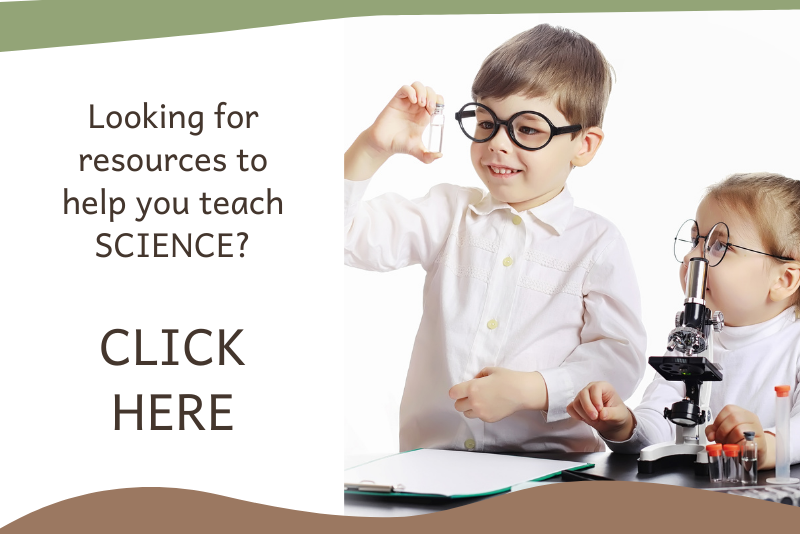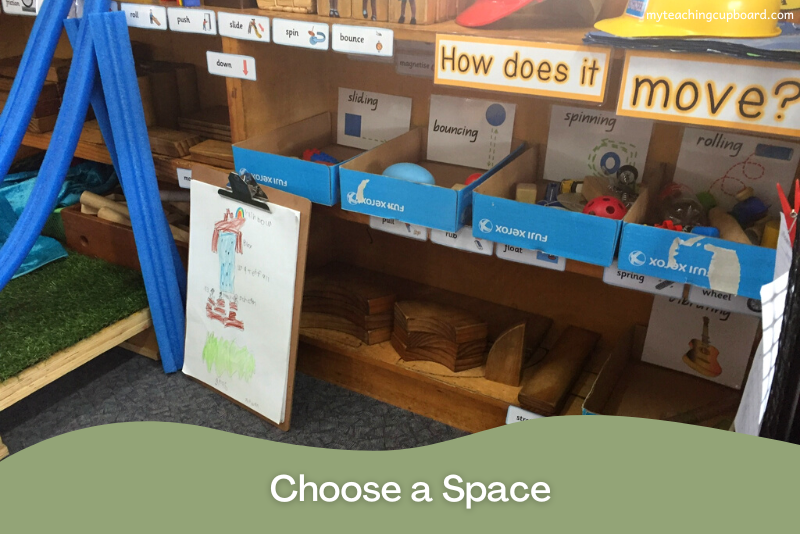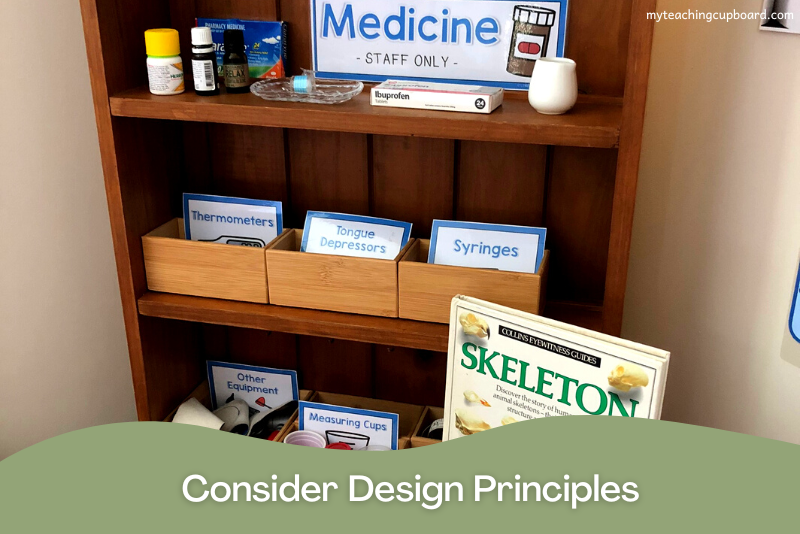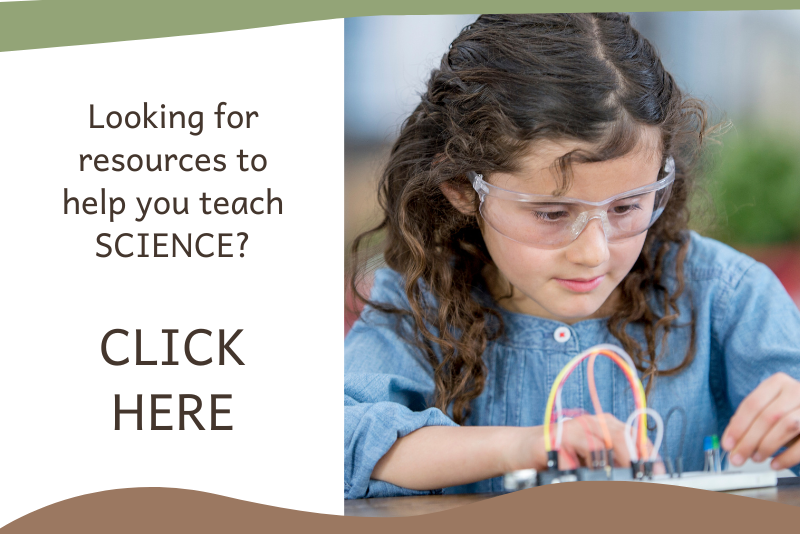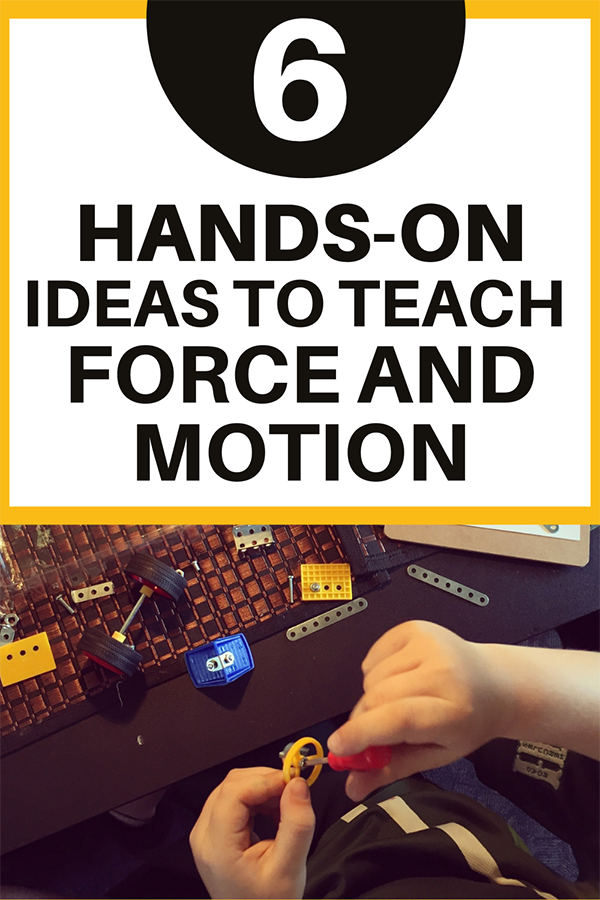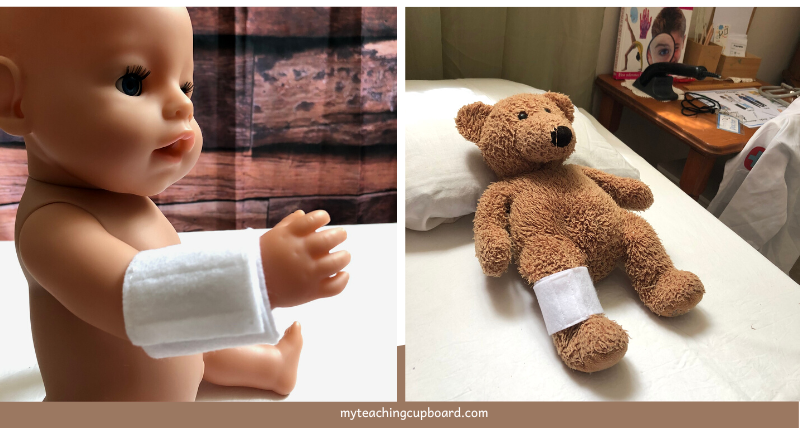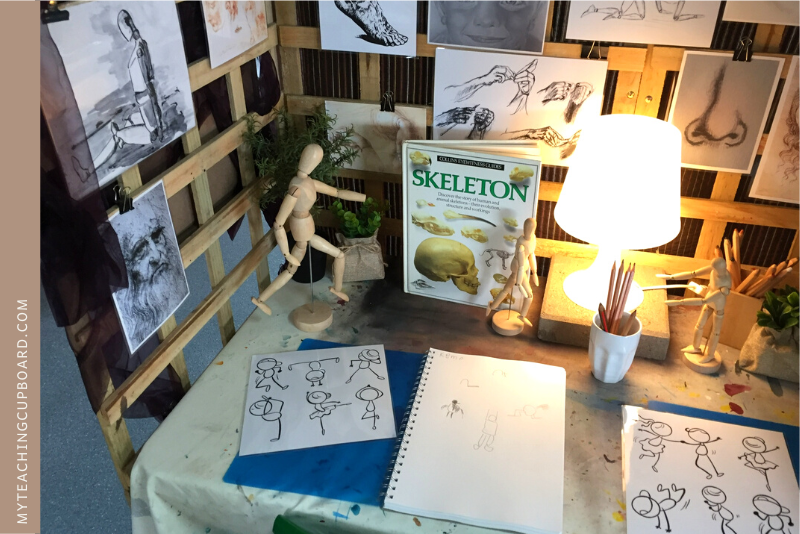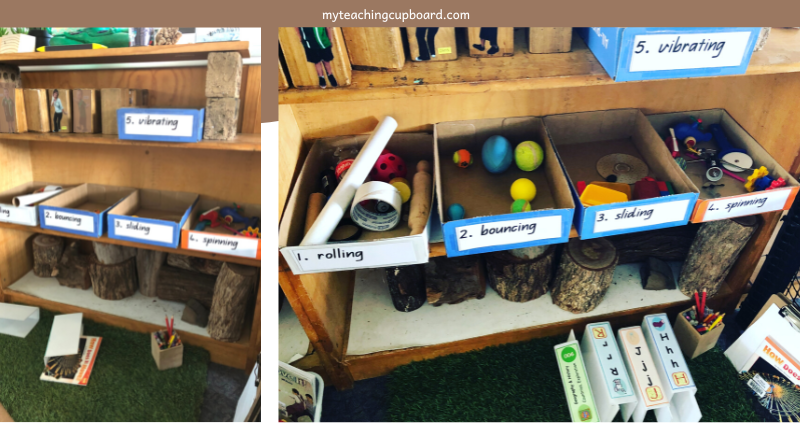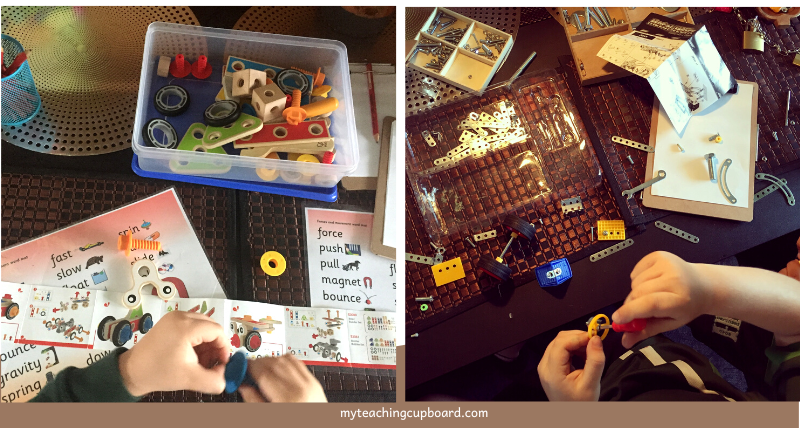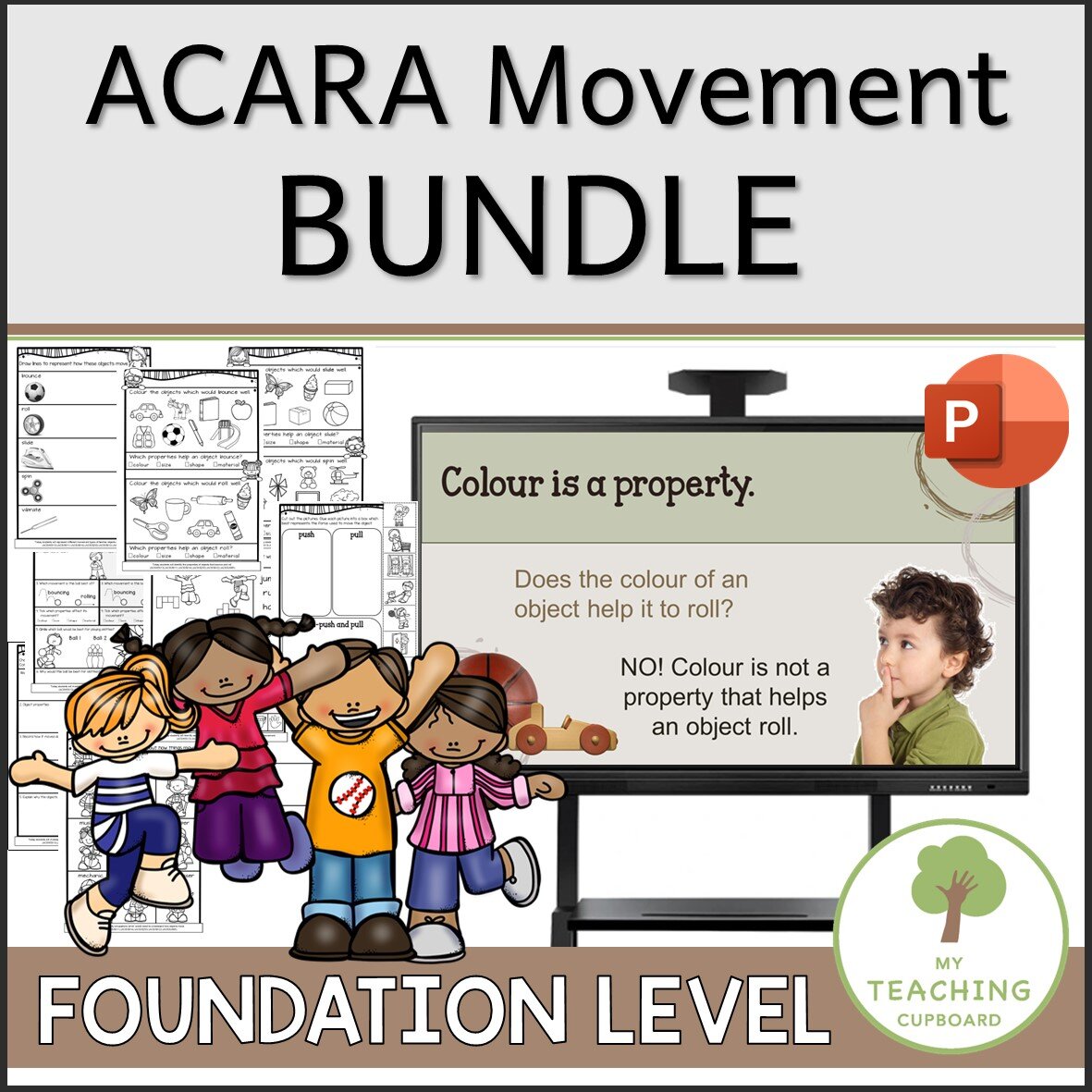Science Provocations - How Things Move
If you are looking for some hands-on science activities to help you teach the kindergarten physical sciences unit on How Things Move or Force and Motion in your early years classroom, this blog post is for you.
This blog post will give you some practical teaching tips and engaging ideas so you can set up your very own purposeful early childhood science learning provocations. Best of all? They are all aligned to the ACARA foundation stage science curriculum learning intentions.
What is a Science Learning Provocation?
A science learning provocation is a hands-on learning invitation that you set up in your classroom to "provoke" scientific thinking and learning.
Thoughtfully set up science provocations will invite your children to explore and investigate concepts and ideas related to your current science curriculum learning intentions.
Effective science learning provocations are intentionally and purposefully designed by the teacher.
Although you need to design your science provocations with the curriculum learning intentions in mind, the science curriculum is not the only thing you need to consider. To ensure you are offering a purposeful learning invitation, your children’s interests and developmental needs should always be top of mind.
To set up an intentional science investigation area where your children can explore how things move, you will need to have a comprehensive understanding of two things.
the curriculum
your children
If you would like some clarification on the ACARA science curriculum in general and how to teach it effectively through play-based and inquiry learning, you might like to check out this blog post: Teaching Science in Early Childhood
In this blog post, you will discover how to effectively teach the Science curriculum and all the science learning intentions through science learning provocations.
Setting up Science Learning Provocations
Setting up your science provocations can be as simple or as elaborate as you like. If you are interested in setting up some purposeful science learning provocations in your classroom, just follow these 3 easy steps:
1. Choose a space
A provocation for learning about how things move should be set up in a clearly defined space. Most teachers choose a designated science table or bench but you can also set up engaging and effective learning provocations in a portable tray, on a shelf, or on the floor.
The size of the working area is important for this unit because your students will often require a reasonable amount of space to effectively perform investigations related to force and motion. I like to set up these types of science provocations next to the carpet meeting area so my students have easy access to this larger open space if they need it.
2. Consider design principles
A well-designed science learning space requires thoughtful planning. If you consider basic design principles when you set up your science learning provocations, your investigation area will be so much more inviting and engaging.
Design Tip: When planning and designing the area, take into consideration how easy it will be for your children to keep it tidy. Well organised and labelled resources in baskets and containers are the secret to a space easily tidied up by children. An organised science area sends the message to your students that the resources and the learning area should be respected and cared for.
A cluttered investigation area can be distracting and may even negatively impact focused learning too.
The design principles of colour, texture, and lighting have a definite impact on the aesthetics of your science investigation areas. Consider using natural materials, soft lighting, and neutral tones if you are looking to create a peaceful focused space.
3. Reinforce learning intentions
A way to focus on the physical sciences curriculum learning intentions is by adding relevant resources and tools to your learning invitations on How Things Move. Think about texts, posters, and vocabulary cards related to movement and force and motion.
I like to use illustrated learning intentions in preschool and kindergarten. The pictures act as a visual prompt to help young learners remember and better understand their WALT goals. You can check out my full Set of Illustrated Science Learning Intentions for the Foundation Stage HERE.
Also add clipboards, blackboards, whiteboards, or blank notebooks for your children to record their learning. Cameras and Ipads are excellent recording devices for this unit and will allow your students to capture movement experiments quickly and easily.
Student created documentation is usually discussed during the reflection time at the end of the investigation session but don’t forget to refer to it later in the day during your explicit science teaching lessons too. This will help to link investigation time to your explicit teaching lessons.
It is also a great way to boost the self-esteem of the student whose work you are sharing. In fact, I have found, using student-created documentation during my explicit teaching lessons increases engagement and has the flow-on effect of fostering higher quality investigations.
You might also like to add direct challenges or prompts related to how things move or force and motion to your learning provocations. The learning prompts can be linked to your science curriculum learning intentions but may also come directly from the children’s interests and developmental needs.
Now you know what a science learning provocation is and how to set up your own purposeful and engaging science investigation areas, you might like some specific learning provocation ideas about the science unit on How Things Move.
Here are 6 force and motion themed learning provocations I have used and found success with in my classroom.
6 Ideas for Science Investigation Areas to Teach How Things Move
Dramatic Play Doctor
Science Learning Intentions:
Students learn that this science unit is about observing and describing movement. Students consider familiar and new terms for describing movement. They focus on the movement of their own bodies as a familiar source for discussions about how size and shape affect the type of movement they can make with their bodies.
The way objects move depends on a variety of factors, including their size and shape (ACSSU005)
Science involves observing, asking questions about, and describing changes in, objects and events (ACSHE013)
Participate in guided investigations and make observations using the senses (ACSIS011)
Pose and respond to questions about familiar objects and events (ACSIS014)
Engage in discussions about observations and represent ideas (ACSIS233)
Share observations and ideas (ACSIS012)
What you will need:
Doctor Signs and Labels - I love and use the dramatic play printables from Casey over at Little Lifelong Learners. You can check out her Doctor Themed Dramatic Play Printables HERE.
A reception table with a clock, play phone, cash register, and paperwork
A doctor’s consultation area with props like chairs and a bed. I made a bed by covering a sturdy table with a white sheet.
Doctor tools like pretend play stethoscopes, needles, tweezers, cotton wool balls, slings, and bandages.
Medicines
X-rays and an x-ray machine. We used an old TV remote control and a box for our x-ray machine.
Texts, posters, and vocab cards about doctors, movement, and the human body.
Clipboards, paper, and pencils.
I have a tutorial blog post on how I made these super cute and easy play bandages for our dramatic play doctor setup. You can check it out here if you’d like to make some too: DIY Play Bandages
How We Move Drawing Provocation
Science Learning Intentions:
Students learn that this science unit is about observing and describing movement. Students consider familiar and new terms for describing movement. They focus on the movement of their own bodies as a familiar source for discussions about how size and shape affect the type of movement they can make with their bodies.
The way objects move depends on a variety of factors, including their size and shape (ACSSU005)
Science involves observing, asking questions about, and describing changes in, objects and events (ACSHE013)
Participate in guided investigations and make observations using the senses (ACSIS011)
Pose and respond to questions about familiar objects and events (ACSIS014)
Engage in discussions about observations and represent ideas (ACSIS233)
Share observations and ideas (ACSIS012)
What you will need:
A small drawing mannequin. This is like a little human figure that can be moved into various poses for reference while drawing.
Variety of drawing mediums like 2B, 4B, and 6B pencils, pens, markers, and artist’s charcoal.
Art journals or drawing cartridge paper.
Printed artist’s drawings of the human body for reference.
Texts, posters, and vocab cards about drawing and the human body.
Exploring Movement in Block Play
Science Learning Intentions:
Students learn that this science unit is about observing and describing movement. Students consider familiar and new terms for describing movement. They focus on the movement of their own bodies as a familiar source for discussions about how size and shape affect the type of movement they can make with their bodies.
The way objects move depends on a variety of factors, including their size and shape (ACSSU005)
A push or a pull affects how an object moves or changes shape (ACSSU033)
Science involves observing, asking questions about, and describing changes in, objects and events (ACSHE013)
Participate in guided investigations and make observations using the senses (ACSIS011)
Pose and respond to questions about familiar objects and events (ACSIS014)
Engage in discussions about observations and represent ideas (ACSIS233)
Share observations and ideas (ACSIS012)
What you will need:
Wooden Blocks.
Things that roll, spin, vibrate, bounce, and slide: tubes (cardboard, wood, and plastic, cd’s, balls, toy cars, bottles, tins, lids, marbles, tuning forks, rulers, large rubber bands, pieces of elastic, rolling pins, spinning tops)
Textured ramp covers to fit the long flat blocks. I cut rectangles of aluminum foil, cardboard, bubble wrap, rubber grip mat, carpet, laminate, fabric, and sandpaper.
Ramps made from pool noodles cut in half lengthwise. These are good for small balls and marbles.
Texts, posters, and vocab cards about movement, force and motion, and how things move.
Clipboards, paper, and pencils.
Box Constructions that Move
Science Learning Intentions:
Students learn that this science unit is about observing and describing movement. Students consider familiar and new terms for describing movement. They focus on the movement of their own bodies as a familiar source for discussions about how size and shape affect the type of movement they can make with their bodies.
The way objects move depends on a variety of factors, including their size and shape (ACSSU005)
A push or a pull affects how an object moves or changes shape (ACSSU033)
Science involves observing, asking questions about, and describing changes in, objects and events (ACSHE013)
Participate in guided investigations and make observations using the senses (ACSIS011)
Pose and respond to questions about familiar objects and events (ACSIS014)
Engage in discussions about observations and represent ideas (ACSIS233)
Share observations and ideas (ACSIS012)
What you will need:
Cardboard boxes, tapes, and glue.
Rubber bands, balloons, straws, wool and string, skewers and chopsticks for wheel spokes, lids & cardboard wheels, toothpicks for spinners and axles, and split pins (for making constructions that move.
Instructions for paper-clip helicopters, balloon cars, and rockets.
Texts, posters, stimulus pictures, and vocab cards about movement and machines.
Clipboards, paper, and pencils.
Construction Sets and Tinkering
Science Learning Intentions:
Students learn that this science unit is about observing and describing movement. Students consider familiar and new terms for describing movement. They focus on the movement of their own bodies as a familiar source for discussions about how size and shape affect the type of movement they can make with their bodies.
The way objects move depends on a variety of factors, including their size and shape (ACSSU005)
A push or a pull affects how an object moves or changes shape (ACSSU033)
Science involves observing, asking questions about, and describing changes in, objects and events (ACSHE013)
Participate in guided investigations and make observations using the senses (ACSIS011)
Pose and respond to questions about familiar objects and events (ACSIS014)
Engage in discussions about observations and represent ideas (ACSIS233)
Share observations and ideas (ACSIS012)
What you will need:
Construction Sets like Junior architect, Meccano, Mobilo, Gears, Duplo, Lego and Marble Runs.
Appliances with moving parts to dismantle and study at the Tinkering table. Some of the ones we have offered include a computer mouse, toaster, old telephones, CD players, fans, bicycles, trolleys and carts, and analog clocks.
Toys and machines that move for students to refer to and as a provocation stimulus.
Texts, posters, and vocab cards about movement, how things work, and machines.
Clipboards, paper, and pencils.
Magnets and Motors
Science Learning Intentions:
Students learn that this science unit is about observing and describing movement. Students consider familiar and new terms for describing movement. They focus on the movement of their own bodies as a familiar source for discussions about how size and shape affect the type of movement they can make with their bodies.
The way objects move depends on a variety of factors, including their size and shape (ACSSU005)
A push or a pull affects how an object moves or changes shape (ACSSU033)
Science involves observing, asking questions about, and describing changes in, objects and events (ACSHE013)
Participate in guided investigations and make observations using the senses (ACSIS011)
Pose and respond to questions about familiar objects and events (ACSIS014)
Engage in discussions about observations and represent ideas (ACSIS233)
Share observations and ideas (ACSIS012)
What you will need:
Tuning forks, toys that move, magnets, small battery-powered motors or lego motors.
Texts, posters, and vocab cards about moving things, magnets, and machines.
Clipboards, paper, and pencils.
If you are teaching the ACARA science unit on How Things Move or on Force and Motion to Foundation Stage or Kindergarten students, you will want to check out my Set of Science Movement Powerpoint lessons and the matching student journal.
This bundle includes 10 PowerPoint lessons and a corresponding student Science Journal. You will have everything you need to teach the ACARA Movement Unit for the Foundation Stage Physical Sciences Curriculum.
The highly engaging lessons and the age-appropriate journal activities have been carefully aligned to the ACARA—Foundation Stage. All the content descriptors from the Foundation Physical Sciences strand are covered.
Each page in the student journal corresponds with each of the 10 PowerPoint lessons and the ACARA content descriptors addressed in each activity are listed at the bottom of each journal page.
Your students will be able to use the journal to record and represent their knowledge and understandings and you could use it as evidence of learning too.
The professional PowerPoint lessons include quality real-life photos and interactive aspects perfect for large screen displays and interactive panels. There are:
animated pictures
links to video clips
interactive slides
easy to set up experiments
fun movement music brain breaks throughout the presentations.
Keep your students highly engaged as they learn all about HOW THINGS MOVE 😊
Now all you need to do is grab some resources, find a space in your classroom, and get started. I would love to see any of the sciences provocations that you set up for this unit. If you post any pics on Instagram – please tag me @myteachingcupboard so I can check them out!
If you liked this post on Science Provocations – How Things Move, please consider sharing it...
Just CLICK the sharing box below.👇


